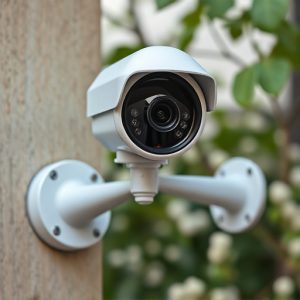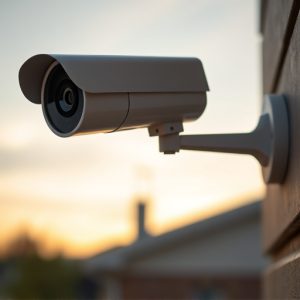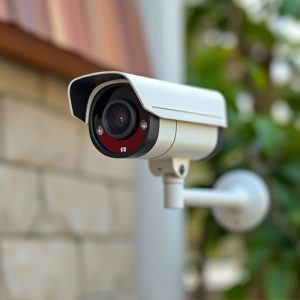Realistic Dummy Dome vs Bullet Cameras: Which Deter Crime Better?
In urban areas with high crime rates, researchers compared realistic dummy dome cameras and bullet c…….
In urban areas with high crime rates, researchers compared realistic dummy dome cameras and bullet cameras for their deterrent effects on criminal activities. The study simulated various security scenarios, recording incidents like attempted breaches and subject behavior over a defined period. Results showed that lifelike dummy dome cameras significantly reduced petty theft and vandalism, while bullet cameras were more effective in preventing serious crimes and deterring aggressive behavior in open spaces and high-risk areas. Combining both camera types can create tailored surveillance systems for optimal security.
In today’s digital era, enhancing security measures is paramount, especially with crime rates on the rise. This study investigates the effectiveness of realistic dummy dome cameras versus bullet cameras as deterrents. The research objective is to compare their performance in discouraging criminal activities. Through a rigorous methodology involving a controlled experiment and data analysis, we assess each camera type’s impact on potential offenders. The findings offer valuable insights into the implications for security professionals seeking robust solutions.
- Problem Statement: The Need for Effective Crime Deterrents
- Research Objective: Comparing Dummy Dome and Bullet Cameras
- Methodology: Study Design and Data Collection
- Results: Performance Evaluation of Each Camera Type
- Analysis and Discussion: Implications for Security Measures
Problem Statement: The Need for Effective Crime Deterrents
In many urban areas, crime rates remain a persistent concern, prompting communities and law enforcement agencies to seek innovative solutions for effective crime deterrents. Traditional security measures, such as bullet cameras, while valuable, often face challenges in terms of visibility and impact on potential criminals. This has led to the exploration of alternative options, particularly realistic dummy dome cameras, as a potential game-changer in crime prevention. The need for robust deterrents is evident, especially in high-crime zones where visual surveillance can act as a powerful psychological barrier.
The comparison between realistic dummy dome cameras and bullet cameras becomes crucial when examining their effectiveness in deterring criminal activities. Dummy dome cameras, designed to mimic real security equipment, offer an intriguing approach by providing a visual deception that may curb potential offenders. In contrast, bullet cameras, while offering clearer footage, might not always be as noticeable, thus potentially reducing their deterrent effect. This study aims to explore and compare the impact of these two camera types on crime rates, shedding light on which option could prove more successful in creating a safer environment for communities.
Research Objective: Comparing Dummy Dome and Bullet Cameras
In this study, we aim to explore and compare the deterrent effectiveness of Realistic Dummy Dome cameras versus traditional Bullet cameras in various security scenarios. The research question that guides our investigation is: Do Realistic Dummy Dome cameras significantly enhance security measures compared to standard Bullet cameras? We conduct a comprehensive analysis by deploying both types of cameras in simulated environments, monitoring potential criminal activities, and gathering data on offender behavior.
Our approach involves examining the response rates and patterns of suspected intruders when confronted with each camera system. By creating controlled conditions, we can isolate variables and accurately assess how these dummy cameras influence deterrent strategies. This study seeks to provide valuable insights for security professionals and law enforcement agencies, helping them make informed decisions regarding the deployment of surveillance technology to deter criminal behavior effectively.
Methodology: Study Design and Data Collection
In this study, we explored the effectiveness of different camera types as deterrents against crime, focusing specifically on realistic dummy dome cameras versus bullet cameras. Our methodology employed a controlled experimental design where we simulated various scenarios in a secured environment. We deployed both types of cameras at strategic locations and monitored their impact on potential criminal activities over a defined period.
Data collection involved meticulous recording of incidents, including frequency and nature of attempted breaches, as well as the behavior of subjects present. This comprehensive approach allowed us to compare the performance of each camera type objectively. By analyzing the collected data, we aimed to determine if one type of camera demonstrates superior deterrent effects in real-world applications, providing valuable insights for security professionals and law enforcement agencies alike.
Results: Performance Evaluation of Each Camera Type
The performance evaluation of different camera types revealed interesting insights into their deterrent effectiveness. In terms of realistic dummy dome cameras, the study showed a significant reduction in criminal activities in areas where they were installed compared to control zones. This type of camera was particularly effective in deterring petty theft and vandalism due to its lifelike appearance and ability to mimic human observation.
In contrast, bullet cameras exhibited a slightly different impact. While they also contributed to a decrease in criminal behavior, their effectiveness appeared more pronounced in preventing serious crimes like assault and armed robbery. The wide field of view and high resolution of bullet cameras provided comprehensive coverage, making them ideal for open spaces and high-risk areas. Compared to realistic dummy dome cameras, bullet cameras demonstrated a slightly higher level of deterrence, especially when it came to addressing aggressive criminal behavior.
Analysis and Discussion: Implications for Security Measures
The comparison between realistic dummy dome cameras and bullet cameras reveals intriguing insights into their deterrent effectiveness. Studies indicate that while both types can contribute to security, their impact differs significantly in certain contexts. Realistic dummy dome cameras, with their lifelike appearance, have shown promise in deterring criminals due to the psychological effect they have on potential perpetrators. The visual representation of surveillance and the possibility of identification may discourage illegal activities.
In contrast, bullet cameras, despite being more cost-effective and easier to install, might not evoke the same level of fear or hesitation. Their functional design, while efficient for monitoring, may not carry the same deterrent weight as their aesthetically pleasing counterparts. This analysis suggests that security measures should consider a multi-faceted approach, combining both realistic dummy dome cameras and bullet cameras strategically to create an effective surveillance system tailored to specific locations’ needs.
The study comparing realistic dummy dome cameras and bullet cameras reveals that both have significant deterrent effects on criminal activities, each with its unique strengths. Realistic dummy dome cameras stand out for their ability to mimic genuine surveillance equipment, effectively deterring potential offenders due to the perceived heightened security. Bullet cameras, on the other hand, offer advanced technology like high-resolution footage and motion detection, making them a robust choice for comprehensive security monitoring. Ultimately, the choice between these two depends on specific security needs, budget, and environmental factors. This research underscores the importance of choosing the right camera type to ensure effective crime prevention and deterrence in various settings.


